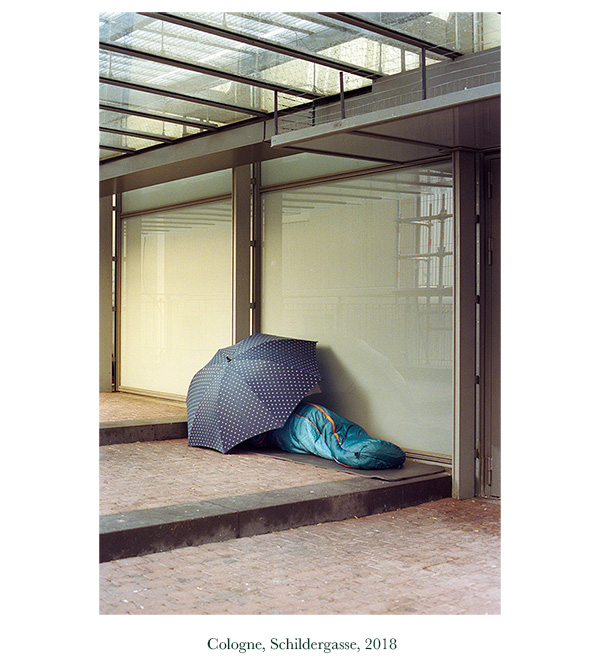
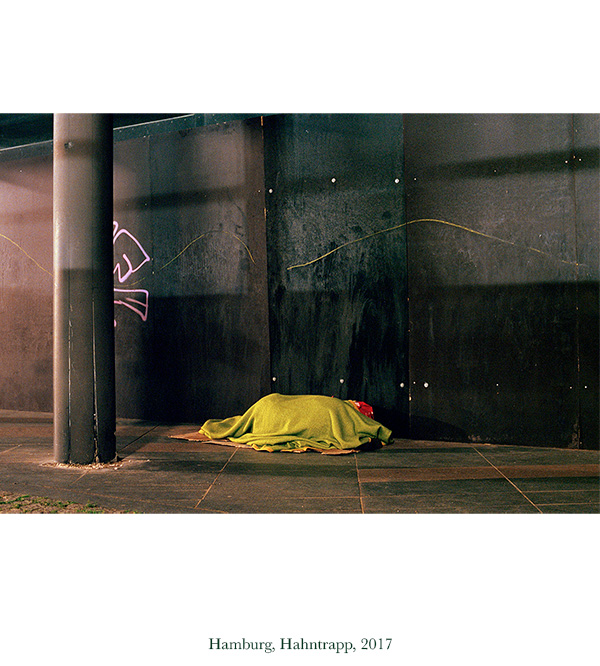
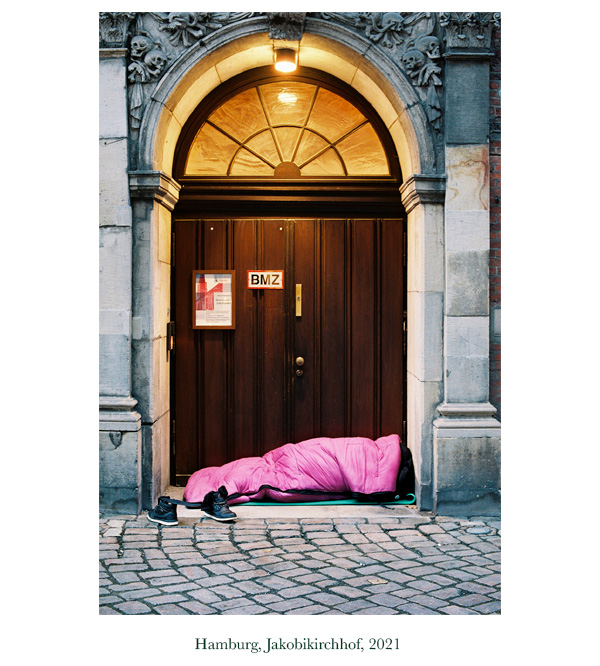
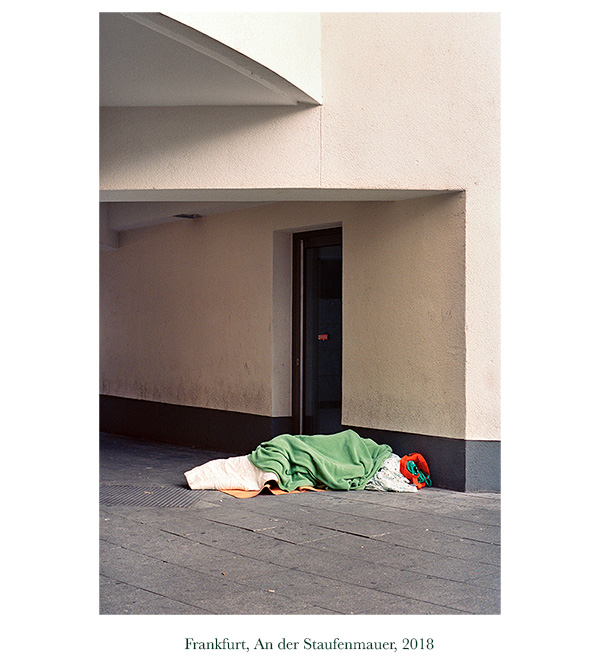
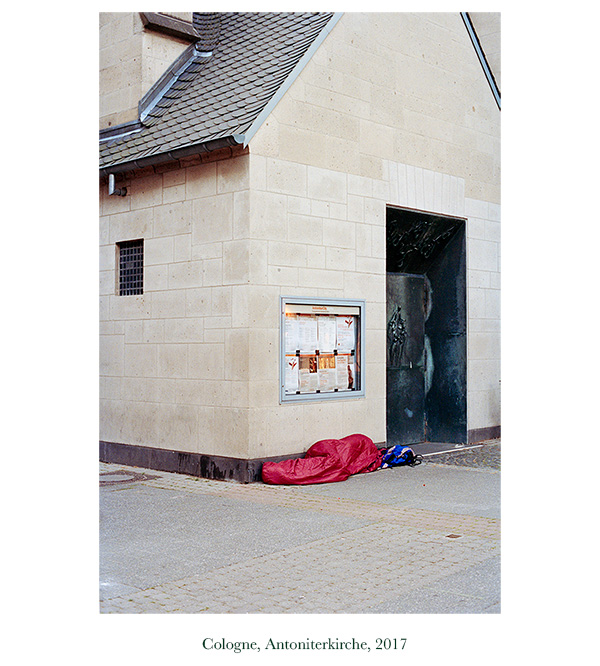
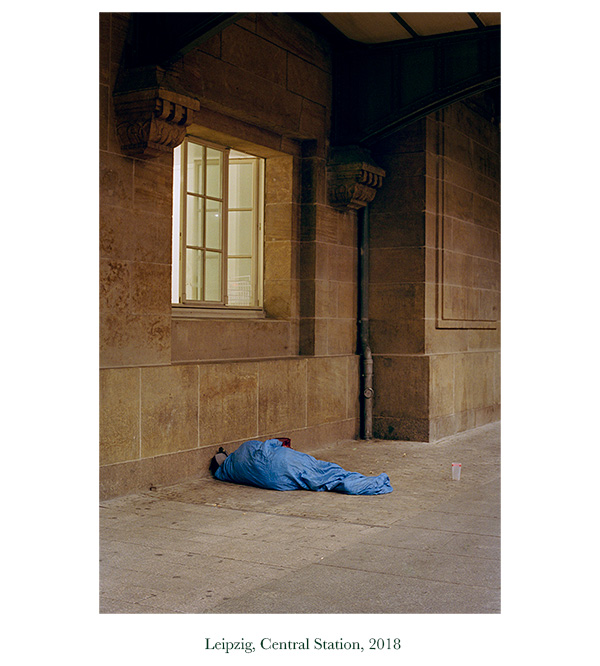
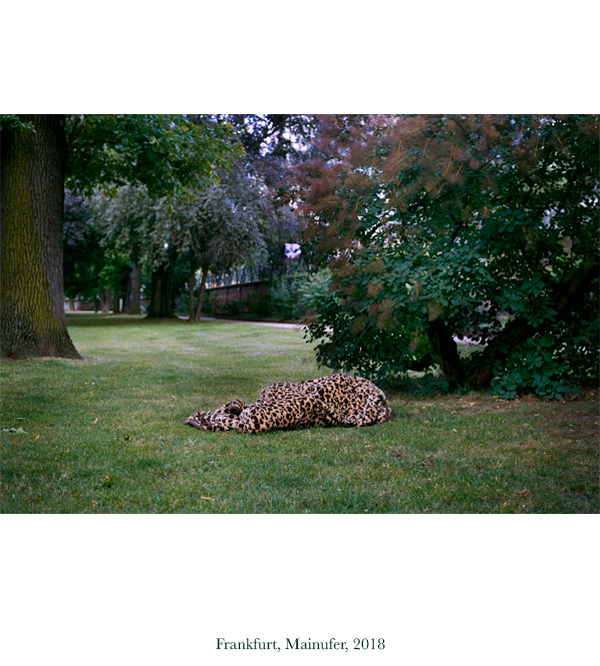
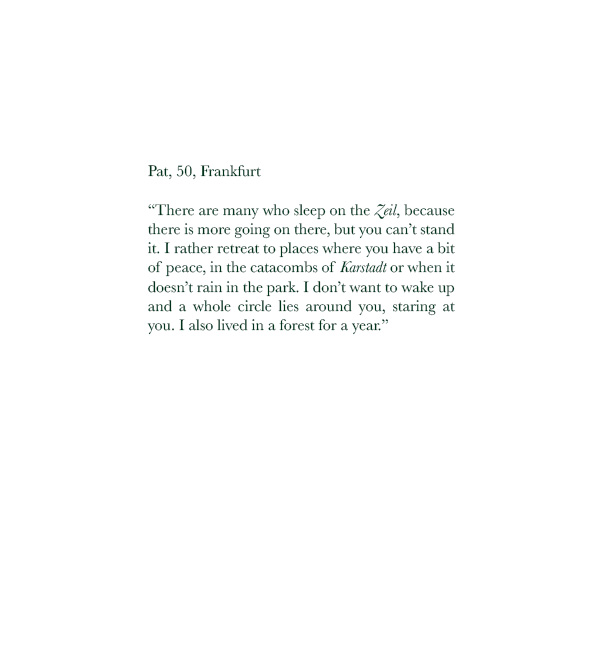
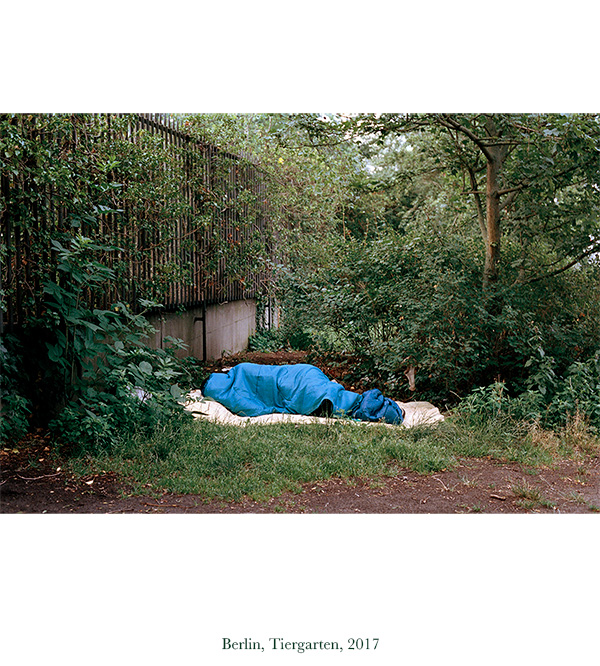
Schlafquartier - Obdachlosigkeit in deutschen Großstädten
Germany is one of the richest countries in the world, yet almost 20% of the population is affected by poverty or social exclusion. In addition to socioeconomic developments and biographical as well as individual problems that lead to homelessness, rents in major cities have been rising steadily for years and are no longer affordable for many citizens. Moreover, a systematic exclusion of immigrant EU citizens from our social systems is taking place.
More and more people are homeless and end up on the streets. Since 2010, the number of homeless people has more than doubled, with 45,000 people currently living on the streets in Germany.
The long-term study "Schlafquartier - Obdachlosigkeit in deutschen Großstädten" (2015 - ongoing) deals with homelessness in major German cities and is created in Berlin, Hamburg, Munich, Cologne, Frankfurt and Leipzig. The result is a sociological topography, a systematic and comparative representation of the places where the ever-increasing homelessness is noticeable and recurring.
Following Christo's principle of "showing by concealing", "anonymous sculptures" are created in an extraordinary silence, revealing no face, no identifying feature, and thus assuming a universal function. These "sculptures" define their environment and at the same time are themselves defined by the locality to which they belong.
In addition to the 40 analogue photographs, detailed and large-format city maps are created for each of the 6 cities. 18 critical essays report on the living conditions of homeless people, they show which repressive measures are used against homeless people in the respective hotspots. On the other hand, they provide analyses of the social and political background of poverty and homelessness. For example, they explore the systematic conditions and structures behind the growing number of homeless people, or describe how politics and other institutions deal with the poorest in our society. The work is supplemented by statistics and 24 original interviews with homeless people.
The original concept is completed by a poster campaign for public spaces, developed for metropolitan bus shelters and a series of 3 newspapers in the style of a street magazine, for direct sales on the street by homeless people.
Schlafquartier is the 1st part of the thematic complex "Armutszeugnisse - Die unteren 20 Prozent", an artistic examination of poverty and the precariat in Germany.
(2015 - ongoing)

